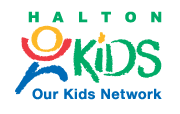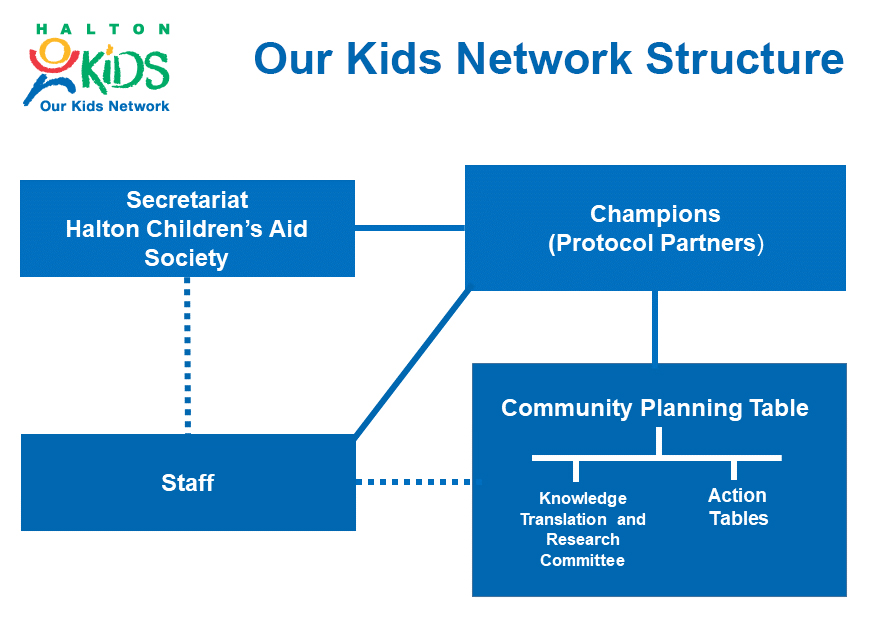Resource Hub
The report offers a comprehensive overview of OKN’s collaborative efforts, key accomplishments and highlights from the previous fiscal year.
Discover the Power of Play: Explore this series of handouts developed by the Center on the Developing Child at Harvard University and backed by the LEGO Foundation. From infancy to independence, use these handouts to embark on a playful journey packed with brain-boosting activities.
Watch this engaging video from the Center on the Developing Child at Harvard University and discover the transformative power of play in fostering resilient relationships, developing core life skills, and reducing stress. Learn how through engaging interactions, play becomes a therapeutic pathway for children and caregivers to thrive amidst challenges.
The Kindergarten Parents Survey is completed every three years and asks Halton families of children in kindergarten about their experiences.
The KPS allows us to examine some important child outcomes that are not measured in the Early Development Instrument.
In the last ten years, the Search Institute has been figuring out how relationships with young people grow and develop. They’ve learned a lot from awesome young people, experts, and parents. This report summarizes what they’ve discovered and how they’ve worked to make relationships better for all youth.
Learn about OKN Neighbourhoods, Halton Municipalities and Census Tracts and understand what each of these geography levels can offer you.
Learn more about the 2023 OKN Neighbourhood Boundaries Update and understand the changes.
Explore these recommendations for action to improve access to accessible leisure and recreation opportunities.
Explore the data and research on youth wellbeing and access to recreation and the need for accessible leisure and recreation opportunities.
Discover data points that can support planning for more inclusive recreation in your municipality. These indicators can help tell a story about community needs for accessible leisure and recreation opportunities.
This report combines data from the 2021 Halton Youth Impact Survey with other sources to support planning and advocacy for more inclusive recreation in Halton to show the importance of ensuring equal access to recreational opportunities.
This bulletin combines data from the 2021 Halton Youth Impact Survey with other sources to support planning and advocacy for more inclusive recreation in Halton. We use the survey data to show the importance of ensuring equal access to recreational opportunities.
These profiles explore risk and protective factors for youth involvement in gun and gang violence in Halton neighbourhoods. The document was developed by OKN as part of the Building Safer Communities in Halton initiative.
We will soon have new, high-quality data to support the work of organizations in Halton! We will learn more about how kindergarten children and their parents are doing based on the Early Development Instrument (EDI) and the Kindergarten Parent Survey (KPS).
Our Kids Network encourages everyone to recognize National Indigenous History Month and expand their Indigenous literacy Helpful resources are available on the OKN website.
Watch the “Two-Spirit and Indigiqueer Cultural Safety: Considerations for Relational Practice and Policy” webinar to learn how to create a safe, respectful, and inclusive environment for LGBTQ2S+ Indigenous people.
Examine the “Racism, Reconciliation, and Indigenous Cultural Safety” webinar to learn about creating a safe and respectful environment for Indigenous people. Gain valuable insights and knowledge with Senator Murray Sinclair and veteran broadcast journalist, Shelagh Rogers.
Learn about the harmful effects of anti-Indigenous racism on health in the webinar “Racism Hurts: Exploring the Health Impacts of Anti-Indigenous Racism.” Discover the profound impacts on Indigenous persons.
View this webinar on “Cultural Safety in the Classroom: Addressing Anti-Indigenous Racism in Education Settings” to learn how to create a respectful and inclusive environment. Gain valuable insights.
Explore the ICS “Indigenous Culture Safety” Collaborative’s webinar series featuring expert speakers and engaging discussions. Discover how this series can benefit you.
The PDF bulletin explores the support systems available to youth in Halton, highlighting their access to information, services, and caring adults.
This PDF bulletin looks into how youth engage in volunteering, civic activities, and environmental issues. Communities are important for kids’ development, and green spaces enhance health and social ties. Volunteering and civic participation empower youth to learn, lead, connect, and build self-confidence.
This PDF bulletin explores youth connectedness during the COVID-19 pandemic and its relationship with positive mental health and wellbeing.
This PDF bulletin delves into the perspective and experiences of Halton youth concerning mental health and well-being. It draws insights from the Halton Youth Impact Survey.
The webpage explores the stories behind the data collected by the Halton Youth Impact Survey, providing insights and understanding of the survey’s results.
Explore the data and research on children, youth and families on the importance of building positive relationships for better outcomes.
The webpage explores the stories behind the data collected by the Halton Youth Impact Survey, providing insights and understanding of the survey’s results.
60 second video clip that focuses on Expressing Care for Babies, one of five simple strategies central to positive child development
60 second video clip that focuses on Expressing Care, one of five simple strategies central to positive child development
60 second video clip that focuses on Expanding Possibilities, one of five simple strategies central to positive child development
60 second video clip that focuses on Challenging Growth, one of five simple strategies central to positive child development
An evaluation report on a 3-year initiative outlines how 6 communities used Collective Impact to improve local early childhood development outcomes by taking action on identified needs.
Watch this video about the Early Development Instrument and the importance of the Early Years
Information on education from an Indigenous perspective.
A reflection on what Canada Day means for both Indigenous and non-Indigenous peoples.
For teachers looking for a culturally relevant and holistic approach to residential school history that facilitates relationship building and promotes ways to engage in reconciliation activities. Book for grades K-12.
Canada’s permanent home for all records, statements, and works related to the Truth and Reconciliation Commissions work.
By Lily Viggiano, former Halton Youth Initiative Project Coordinator – Volunteering is the ultimate exercise in democracy. You vote in elections once a year, but when you volunteer, you vote every..
Toolkit created by the Halton Youth Initiative that represents the key aspects of a young person’s volunteer experience with volunteering: how to recruit, how to retain, and how to recognize youth volunteers.
Youth-led project to elevate youth voice and empower youth to have a positive impact in the communities of North Oakville, Acton, Aldershot, and Milton.
By Connor Clerke, OKN knowledge broker In May and June 2021, Our Kids Network, in collaboration with UNICEF Canada, the Canadian Index of Wellbeing, Medivae Foundation and the Ontario Trillium…
By Steve O’Hearn, Transitional Youth Worker, Bridging the Gap Program I often reflect on my high school experience, whether it be the social circles, the extracurriculars, or the stressors of…
By: Lacey Swamy (She/They), Youth Leader, Writing from Treaty 22 Land For years, I thought I was white. Truth be told, I never felt “brown enough” to identify as anything else. I’m half Guyanese and…
By Juan Medina, Children’s Services Research Advisor, Halton Region I had no idea what to expect when I started working for the Halton Region two years ago. I was juggling with a lot of personal…
This bulletin delves into the perspective and experiences of Halton youth concerning mental health and well-being. It draws insights from the Halton Youth Impact Survey
This bulletin explores youth connectedness during the COVID-19 pandemic and its relationship with positive mental health and wellbeing.
The webpage provides resources and tools for using data to inform decisions and actions to improve outcomes for children, youth, and families in Halton.
The webpage explores the stories behind the data collected by the Halton Youth Impact Survey, providing insights and understanding of the survey’s results.
This webpage provides data on the sociodemographic characteristics of children, youth, and families in Halton, including population size, age distribution, and diversity.
This webpage is about using data to improve relationships among children, families, and communities. It provides resources and tools for effective collaboration and decision-making.
The webpage explores the stories behind the data collected by the Halton Youth Impact Survey, providing insights and understanding of the survey’s results.
This webpage provides data on the sociodemographic characteristics of children, youth, and families in Halton, including population size, age distribution, and diversity.
Explore these recommendations for action to respond to the insights of this bulletin: Supporting Families to Champion Positive Youth Development.
The webpage explores the stories behind the data collected by the Halton Youth Impact Survey, providing insights and understanding of the survey’s results.
This webpage provides data and insights on the social and demographic factors that support families in championing positive youth development.
The bulletin explores the support systems available to youth in Halton, highlighting their access to information, services, and caring adults.
The webpage provides resources and tools for using data to inform decisions and actions to improve outcomes for children, youth, and families in Halton.
The webpage explores the stories behind the data collected by the Halton Youth Impact Survey, providing insights and understanding of the survey’s results.
This webpage provides data on the sociodemographic characteristics of children, youth, and families in Halton, including population size, age distribution, and diversity.

